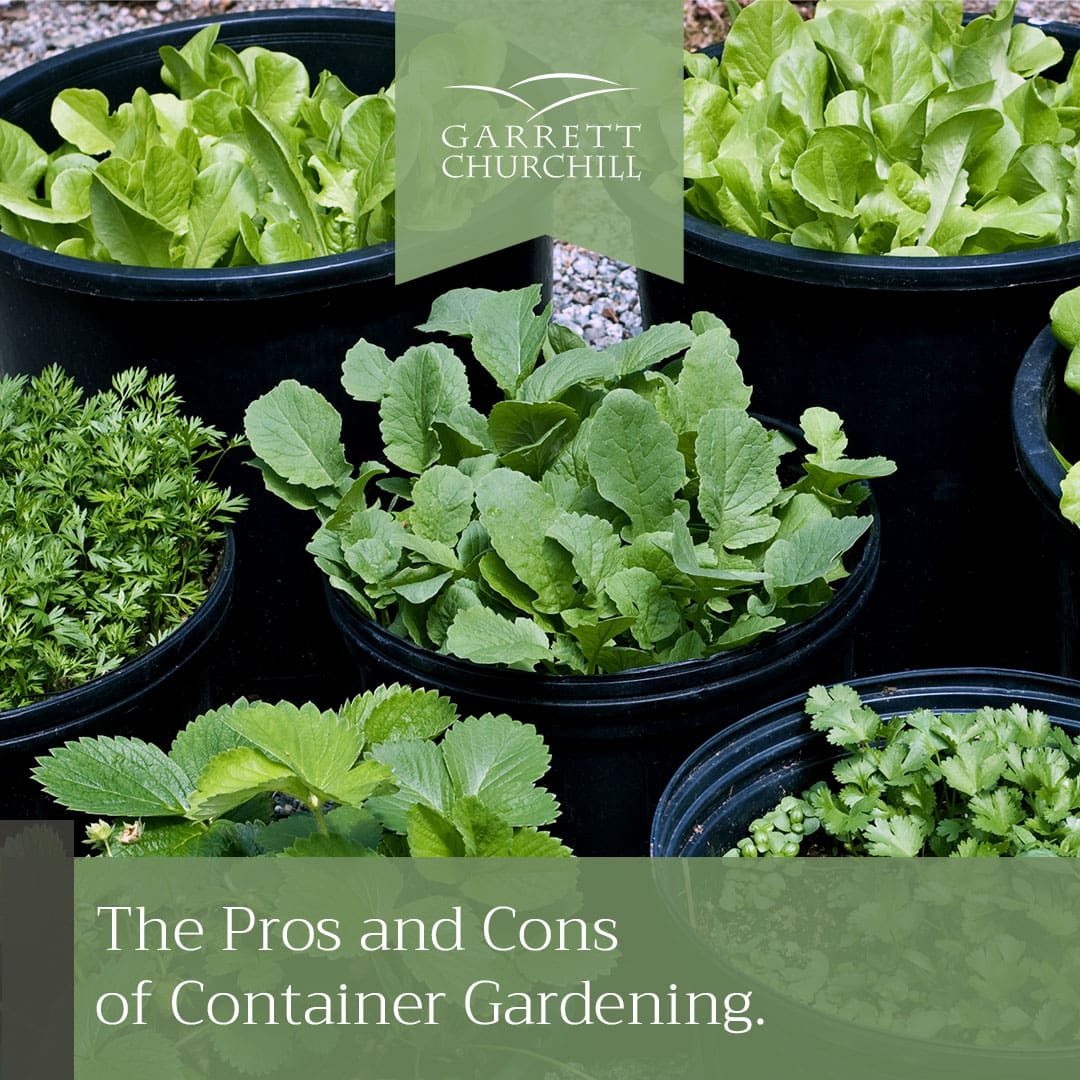The Pros and Cons of Container Gardening
Particularly in bustling urban environments, vegetation can impart color and life to the smallest spaces. The practice of container gardening, or growing plants in pots, is an efficient way to keep balconies and patios filled with colorful plants and containers throughout temperate seasons. Read on to learn more about the perks and downsides of container gardening.
What are the pros of container gardening?
#1: Perfect for Small Spaces
Container gardening is particularly beneficial for renters who don’t have the space or authority to make significant changes to their landscape. By planting a small gardening area, renters can transform industrial spaces into thriving ecosystems.
With a bit of know-how and creativity, you can grow the following:
- Lettuce and salad greens
- Herb gardens
- Assorted succulents
- Selective perennial and annual flowers
- Nightshades including tomatoes, potatoes, peppers, and eggplants
#2: Easy to Relocate
While they may be a bit dirty, pots can be quickly relocated if necessary. Containers can be rearranged for social gatherings or if a sunnier location is identified. Remember to be mindful of the pot size/s you select, as larger pots may be prohibitively heavy.
If space allows, you may want to invest in a trolly to relocate potted plants and outdoor furniture.
#3: Fewer Weeds to Pull
Since a container is a controlled environment, fewer weeds will grow. Growers can personally select soil and seedlings, reducing the chances of unwanted vegetation taking root significantly.
However, remember that birds and wind forces can carry seeds into the container.
Thankfully, weeding potted plants is fast and painless.
#4: Fewer Pests and Diseases
Pests and diseases are unlikely to be an issue for container plants because of the inherent separation from other plants. With good quality potting soil, light, and heat conditions, it is highly unlike the plant will become infected.
#5: Requires Less Tools to Get the Job Done
Planting a container garden requires basic gardening tools, seeds or seedlings, a container or pot, potting soil, and water. You can also purchase gardening gloves, pruning shears, compost, or fertilizer if necessary.
As long as your containers have sufficient space and drainage holes, feel free to get creative with your selection! Consider the following items:
- Bird feeders
- Kitchen bowls
- Wooden boxes
- Tree stumps
- Bike baskets
- Mason jars
Now that we’ve covered the benefits of container gardens, be mindful of the following considerations.
#1: Container Gardens Need to Be Watered More Often
With such a limited soil volume, plants in containers need frequent watering. It is critical to check your soil weekly to determine hydration levels.
Keep an eye open for the following telltale signs:
- Shriveled, brittle, or dead leaves
- Drooping leaves or petals
- Slow or limited growth
- Light brown soil that lacks hydration to the naked eye
Always keep a watering can nearby to ensure the elements do not take a toll on your container garden.
#2: Some Plants Grow Too Large for Containers
Many plants at your local gardening center need more space than a small container can provide. If you do try growing larger plants in containers, the roots won’t have the required space and nutrients, which can stunt your plant’s growth.
When plant shopping, pay close attention to the nursery’s recommendations. For example, an 8” plant will need a container with an 8” diameter. Save the tags or instructions to ensure you remember what you purchased and where you planted it.
#3: Requires Good Soil and Fertilizer
Since container plants have only a small space to grow, it is up to you to provide these plants with the nutrients they need. It is recommended that you purchase nutrient rich potting soil, compost, and organic fertilizer for your container gardens.
Proper drainage is imperative for the long-term health of your plants. We recommend you dampen and lightly fluff soil prior to plant placement to assist in the rooting process. The holes in the bottom of containers provide an essential exit point for water to ensure proper soil aeration.
#4: Outdoor Areas May Have Inadequate Sunlight
The orientation of your outdoor space is critical to the success of your container garden. If you select plants requiring more sunlight than your area receives, your garden will never reach its potential.
You may want to slowly add to your container garden after seeing which plants or areas prove most successful. You can also check out a Sun Calculator to understand your exposure.
#5: May Add Clutter to Small Spaces
Lastly, not everyone loves the mixed mediums involved in a container garden. If you enjoy a more traditional aesthetic, the aged patina of vintage metals may not be your style.
That said, you can veer away from industrial design with similar materials, organized lines, and repeated elements.
Grow Your Dream Garden With Us
Our creative landscape professionals provide dependable expertise from concept to completion. Visit http://garrettchurchill.local/planting to learn more about how we can help you transform your garden.
